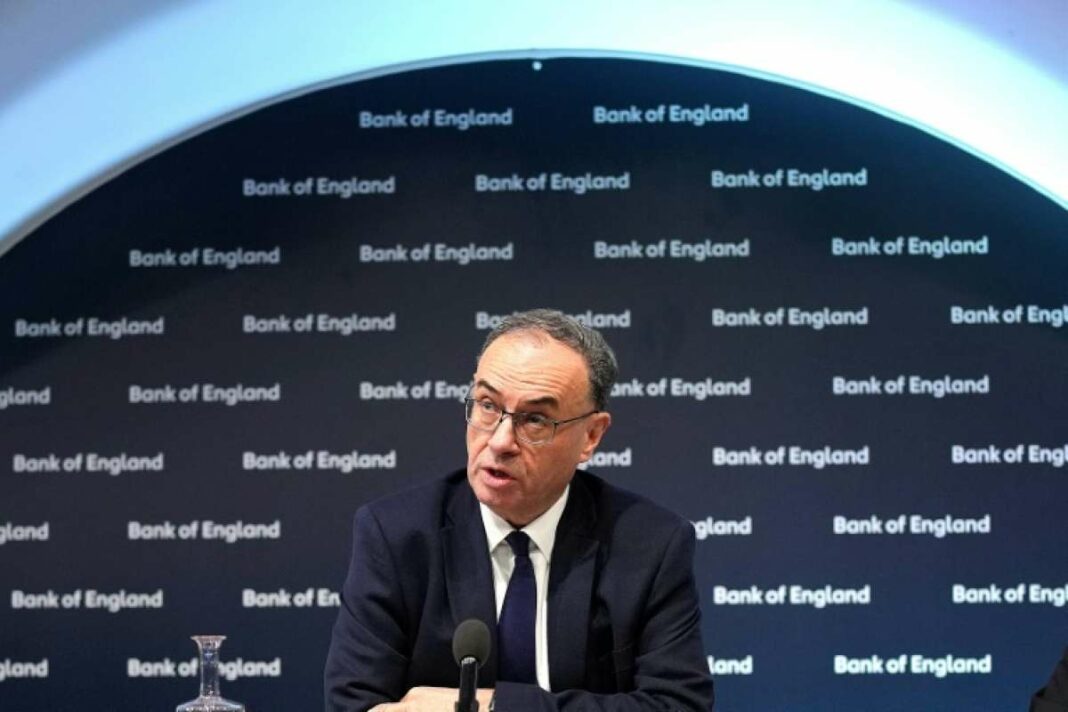On Thursday, the Bank of England cut its key interest rate to 4.5% amid economic difficulties exacerbated by U.S. tariff threats. This marks the third reduction in six months, coinciding with a significant downgrade in growth forecasts for the UK, predicting just 0.75% for 2024 and 2025. The BoE noted increased uncertainty in global trade and its potential impact on British economic activity. The British pound fell in response, while inflation is expected to reach the target by late 2027.
Bank of England Lowers Interest Rates Amidst Economic Challenges
On Thursday, the Bank of England (BoE) made a surprising move by reducing its key interest rate to 4.5%. This decision comes as the British economy faces significant challenges, compounded by threats from American tariffs.
Andrew Bailey, the governor of the BoE, stated, “We are closely monitoring the British economy and developments worldwide and will take a gradual and cautious approach to further rate cuts.” This statement was part of the monetary policy report released alongside the rate change.
Revised Growth Forecasts Spark Concern
Economists had anticipated this rate cut, which marks the third quarter-point reduction in just six months, following similar cuts in August and November. However, the BoE has also significantly downgraded its growth forecasts for the UK. The growth prediction for 2025 has been halved to 0.75%, down from an earlier estimate of 1.5%. This adjustment reflects concerns over global economic uncertainties, particularly in light of tariff threats from the United States, and a decline in business confidence within the UK.
For 2024, the growth forecast has been adjusted to 0.75% from 1%. This contrasts with the International Monetary Fund’s (IMF) recent increase in its growth forecast for the UK to 1.6% earlier this year.
The BoE highlighted that “uncertainty about global trade policy has significantly increased since the US presidential election,” especially due to tensions between the US and China. While the UK is not currently the target of tariff threats, any increases could negatively impact British economic activity and may lead businesses to postpone investment and hiring decisions.
Additionally, analysts from BNY have pointed out that potential increases in US taxes on EU exports could indirectly harm the British economy by slowing down growth in Europe and Ireland.
The recent rate cut aligns with a slowdown in inflation in the UK, which stood at 2.5% year-on-year in December, following spikes in October and November. Notably, two members of the monetary committee expressed a desire for even deeper cuts during Thursday’s meeting.
Currently, the BoE estimates it will reach its 2% inflation target by the last quarter of 2027, slightly later than previously forecasted. The recent hikes in employer contributions and exceptional borrowing announced by Finance Minister Rachel Reeves are expected to contribute to rising prices.
Bailey, a proponent of the government’s growth initiatives, acknowledged that “structural policies take time to materialize,” indicating a timeline of two to three years for these measures to take effect. In response to the BoE’s announcement, the British pound fell by 0.76% to 1.2410 dollars.
Analyst Paul Dales from Capital Economics noted that the BoE has indicated a willingness to implement quicker and sharper rate reductions. Meanwhile, the Federal Reserve in the US faces its own challenges with inflation and has chosen to pause its rate-cutting cycle. The European Central Bank (ECB) is also expected to continue lowering rates in response to lackluster growth in the eurozone.
